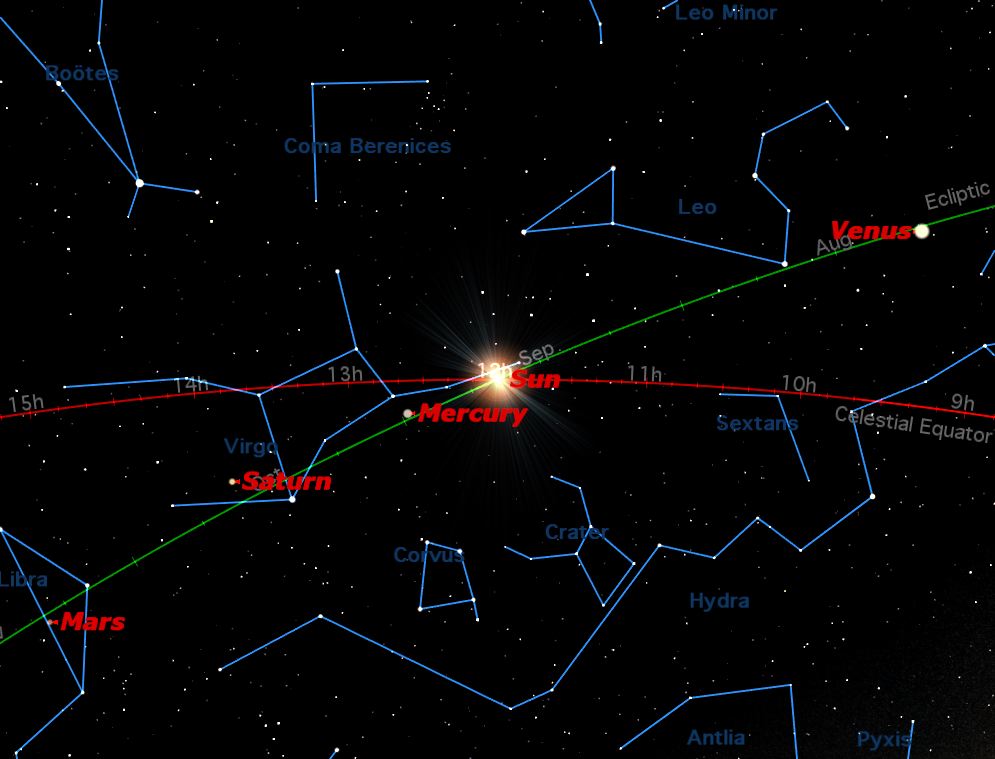Fall Equinox Show Friday: How to Watch Online

This weekend marks the transition from summer to fall in the Northern Hemisphere, and viewers around the world can watch a special webcast Friday (Sept. 21) to celebrate the event.
The online Slooh Space Camera, which broadcasts live views from telescopes around the world, will stream shots of the sun Friday beginning at 4 p.m. EDT (2000 GMT). The free show is in honor of the September equinox, which on Saturday (Sept. 22) rings in the Northern autumn and the Southern spring.
Slooh will also air telescope views of the moon during the webcast to mark International Observe the Moon night, which falls on Saturday this year as well. The sun and moon shots will come from observatories in Prescott, Ariz., and the Canary Islands off the west coast of Africa, Slooh officials said.
The webcast can be accessed at the Slooh Space Camera's website.
A panel of experts will be on hand to discuss the equinox, International Observe the Moon night and the views seen by the telescopes. Participants include:
- Patrick Paolucci, Slooh president
- Bob Berman, Slooh editor, Astronomy Magazine columnist and author
- Matt Francis, Prescott Observatory
- Lucie Green, solar researcher and frequent BBC contributor
- Paul Cox, Slooh engineer
But the equinox isn't actually a day; strictly speaking, it's a moment in time, defined as the instant the sun crosses the celestial equator (which is Earth's equator projected onto the sky). The sun is above the celestial equator for half the year (spring and summer) and below it for the other half (fall and winter).
International Observe the Moon Night is put on by a coalition of scientists, educators and moon enthusiasts around the world, in an attempt to instill a sense of wonder and curiosity about Earth's nearest neighbor. [How to Observe the Moon (Infographic)]
Get the Space.com Newsletter
Breaking space news, the latest updates on rocket launches, skywatching events and more!
Moon-viewing parties will be held at multiple sites around the world on Saturday. To find one near you, visit http://observethemoonnight.org/.
While Slooh's webcasts offer amateur stargazers access to world-class observatories, the organization is working to make the experience more interactive. It's currently developing an app called MySky, which will allow users to command Slooh robotic telescopes via their own tablet computers or cellphones. The first version should be available in the next few months.
Follow SPACE.com on Twitter @Spacedotcom. We're also on Facebook & Google+.
Join our Space Forums to keep talking space on the latest missions, night sky and more! And if you have a news tip, correction or comment, let us know at: community@space.com.

Space.com is the premier source of space exploration, innovation and astronomy news, chronicling (and celebrating) humanity's ongoing expansion across the final frontier. Originally founded in 1999, Space.com is, and always has been, the passion of writers and editors who are space fans and also trained journalists. Our current news team consists of Editor-in-Chief Tariq Malik; Editor Hanneke Weitering, Senior Space Writer Mike Wall; Senior Writer Meghan Bartels; Senior Writer Chelsea Gohd, Senior Writer Tereza Pultarova and Staff Writer Alexander Cox, focusing on e-commerce. Senior Producer Steve Spaleta oversees our space videos, with Diana Whitcroft as our Social Media Editor.









